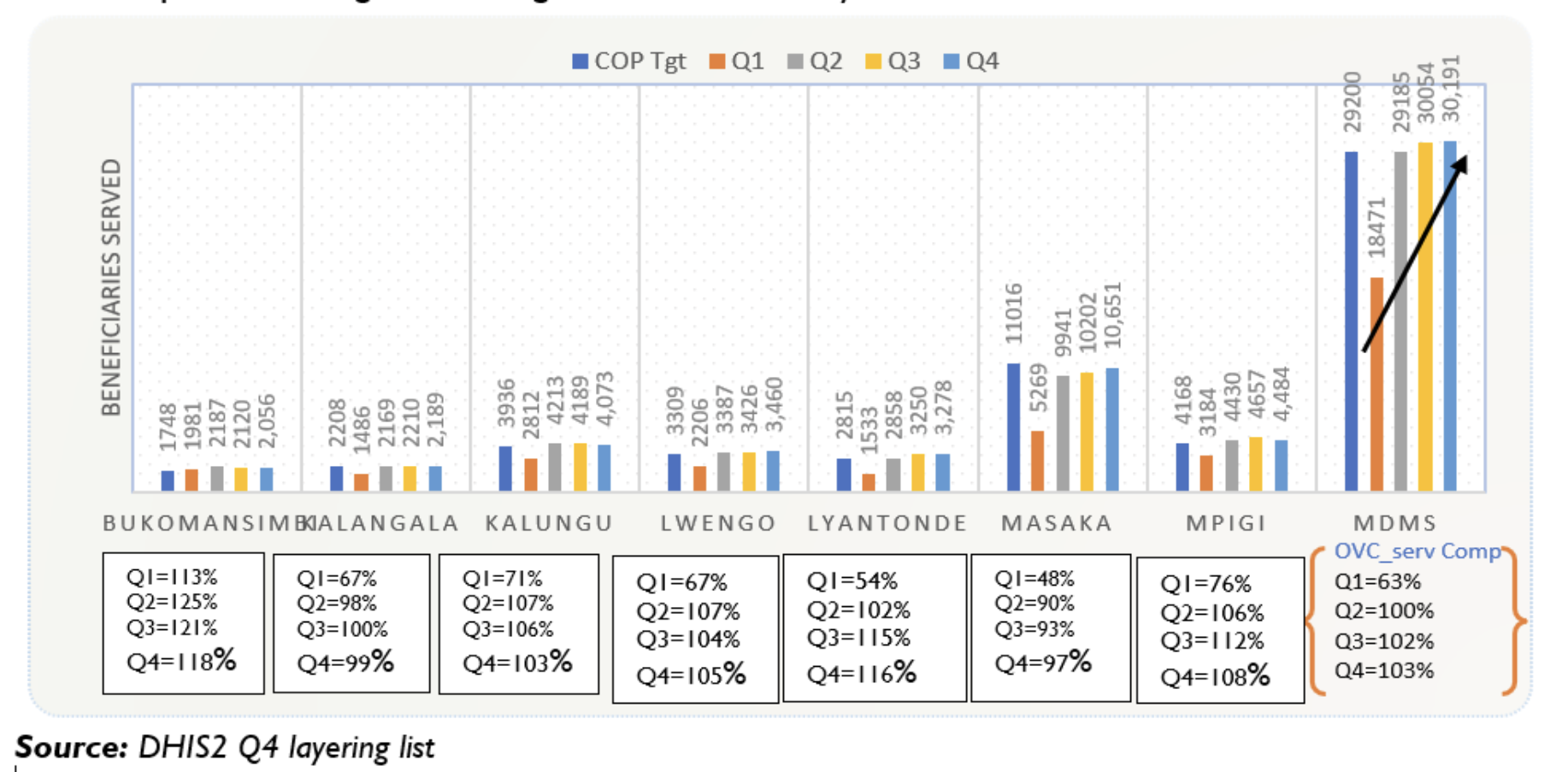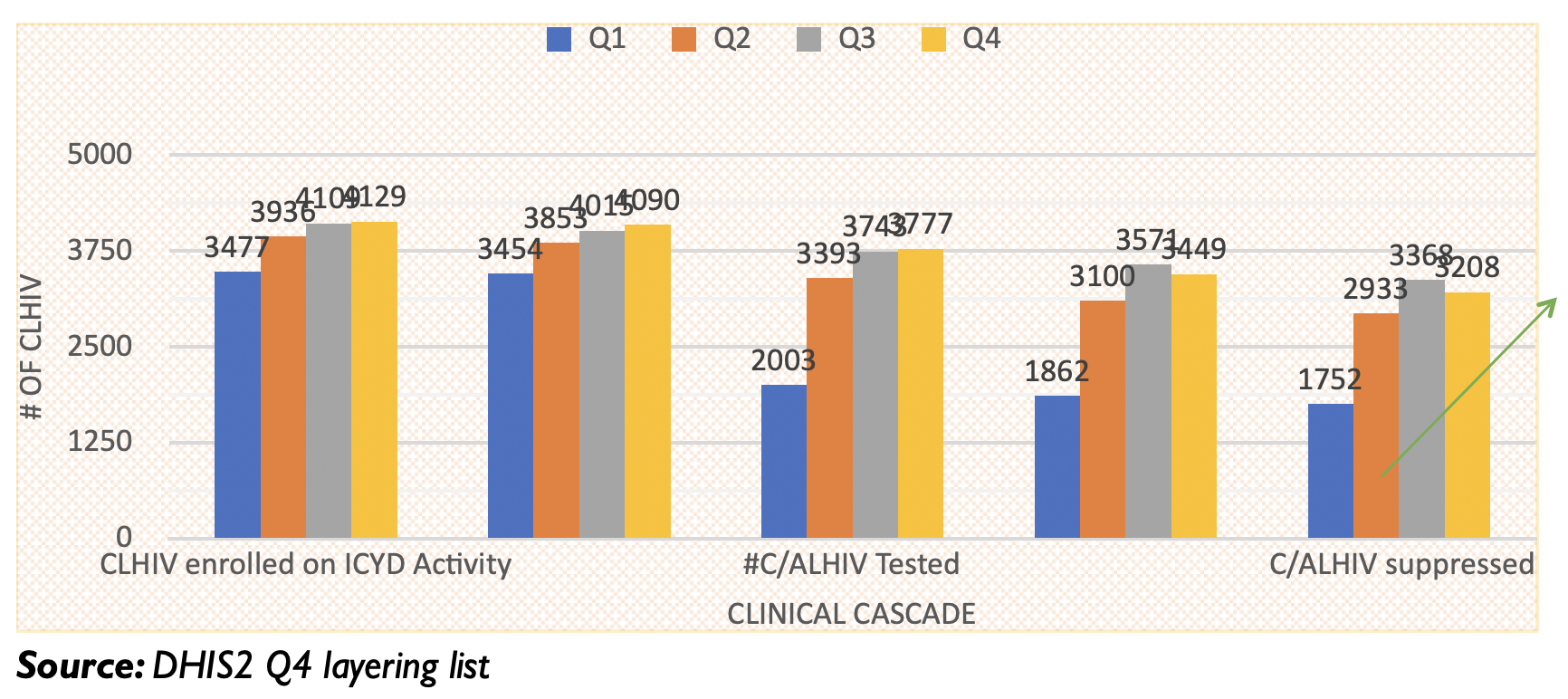
The USAID Integrated Child and Youth Development (ICYD) Activity will deliver basic education services in 50 target districts and Orphans and Vulnerable Children (OVC) services to children and youth in 73 target districts. The goal of ICYD is to strengthen young people’s ability to engage with their environment, address their health and safety needs, and make it more likely for them to reach their potential. ICYD is an integrated Activity with overlapping areas of service provision that allow for a ‘layered’ approach that is intended to maximise the efficiency and effectiveness of services. The ICYD Activity has three mutually reinforcing objectives: 1) Children and youth have improved learning outcomes; 2) Children and youth are protected, safe, and healthy in their homes, communities, and learning environments; 3) Youth practice positive behaviours and make informed decisions about their lives and relationships.
In an integrated and cross-sectoral approach, the ICYD Activity will implement targeted interventions that will ensure children and youth, especially the most vulnerable, receive the support and services necessary to lead resilient, healthy, and productive lives. Activity implementation is under five tasks:
Task 1: Build on the recent Early Grade Reading (EGR) support to the Ministry of Education and Sports (MoES).
Task 2: Address primary school retention through a combination of family, community, and school-based interventions that address known critical drivers of school dropout.
Task 3: Provide critical OVC services directly for up to two years while building local partners’ capacity to transition to prime awards with USAID/Uganda.
Task 4: Provide technical assistance and coordination to OVC service providers in service delivery districts.
Task 5: Deliver effective technical assistance and support to the Ministry of Gender Labor and Social Development (MGLSD), MoES, and other public/private institutions and organisations to progressively transition OVC service delivery and education improvement from donor support.
The ICYD Activity will promote improved coordination and collaboration across sectors and other USAID-supported programs. The Activity will strengthen systems for better communication and planning at national, district, and municipal levels of government and between government and non-governmental institutions that serve children and youth.
ICYD activities in Year 2 will take place across 73 districts. (See Annex B for the list of FY22 districts).
DATA TRENDS & VISUALISATIONS
In Q1, MDMS served 1847 (63%) transitioned and newly enrolled beneficiaries, in Q2 MDMS served 29185 (100%) beneficiaries, this was achieved through training more PSW in Case Management, using Health facilities to track unenrolled CLHIV on ICYD Activity. Q3 MDMS served 30054 (102%) while in Q4 MDMS served 30191 (103%). MDMS noticed that continuous training, mentorship and coaching of PSWs strengthens service delivery to the enrolled Households

Q1 non suppressing CLHIV that are now suppressed in Q4
In Q1 MDMS enrolled and served 3477 CLHIV, 110 were unsuppressed, in Q2 MDMS targeted all unsuppressed CLHIV with special services such as; developing the Root Cause Analysis and JAP, treatment literacy education, assigning CLHIV HH to social workers and staff under the Know Your Child (KYC) model, assigning treatment supporters, PSW attachment to HHs and other services, CLHIV (110). This resulted into 56 (51%) suppressing, in Q3 MDMS served 167 unsuppressed CLHIV, 72 (43%) suppressed and in Q4 MDMS served 203 unsuppressed CLHIV and 56 (28%) have suppressed.

Quarterly Trends of VLS
In Q4 MDMS has served 4129 CLHIV on the ICYD Activity compared to the 3477 CLHIV served in Q1 with over 93% suppression rate in the 4 quarters and 99% retained on treatment. This was achieved through MDMS’ integrated and targeted services to CLHIV households like integrated IAC sessions, developing RCA & JAP, assigning treatment supporters and providing treatment literacy education to the CLHIV households during monthly home visits.
In Q4, MDMS supported 4090 CLHIV to receive VL testing compared to 2003 CLHIV in Q1, this was done through ICYD innovations like conducting community VL bleeding, counter books for Social workers to track VL bleeding dates for CLHIV and flagging CLHIV who are due or eligible for VL testing. MDMS also supported 3449 CLHIV to receive VL results compared to 1862 CLHIV supported in Q1, this was done in collaboration with Health facilities and clinical partner responsible for laboratory services in the region.

